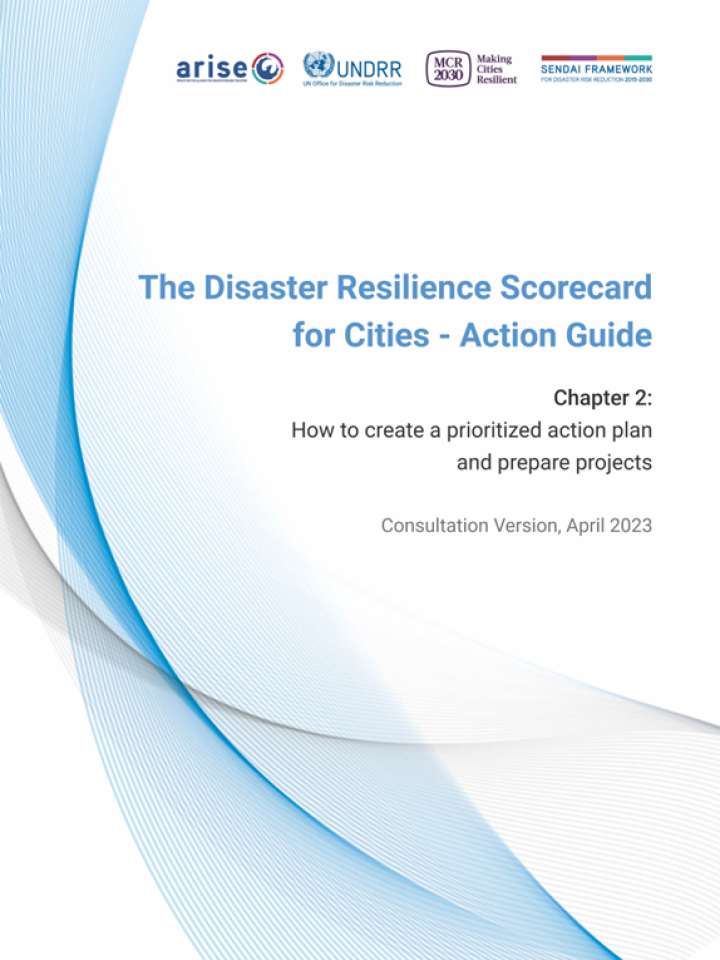The Disaster Resilience Scorecard for Cities – Action Guide. Chapter 2: How to create a prioritized action plan and prepare projects
This action guide aims to support local governments in developing and implementing an action plan to address gaps identified in their resilience strategies based on the results from the use of the UNDRR Disaster Resilience Scorecard for Cities.The guide is a result of contributions from the ARISE-US Network in collaboration with the United Nations Office for Disaster Risk Reduction (UNDRR) and the Making Cities Resilient 2030 (MCR2030) initiative.
The UNDRR Disaster Resilience Scorecard for Cities is proven to be a very helpful tool in assessing all the ‘systems of systems’ aspects of disaster resilience and creating a holistic ‘baseline’ of city’s strengths and weaknesses. While it helps cities identify gaps and potential areas of improvement, it is less effective at helping cities prioritize and figure out next steps. Based on results from a survey and feedback from local governments and stakeholders, this Action Guide aims to provide ‘how-to’ steps to support local governments in developing and implementing an action plan to address gaps identified in their resilience strategies based on the assessment results from the use of the UNDRR Disaster Resilience Scorecard for Cities.
The Action Guide has a number of chapters:
- Chapter 1 – Overview of the survey results
- Chapter 2 – How to create a prioritized action plan and prepare projects (this chapter)
- Chapter 3 – How to engage with the community
- Chapter 4 – How to finance projects derived from the action plan
- Annex – Compendium of Standards that are applicable for cities
